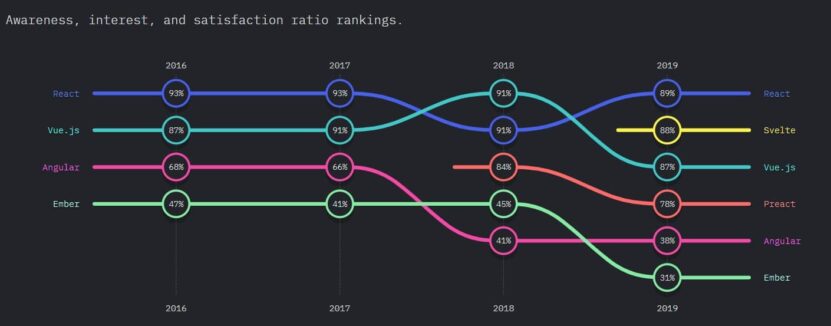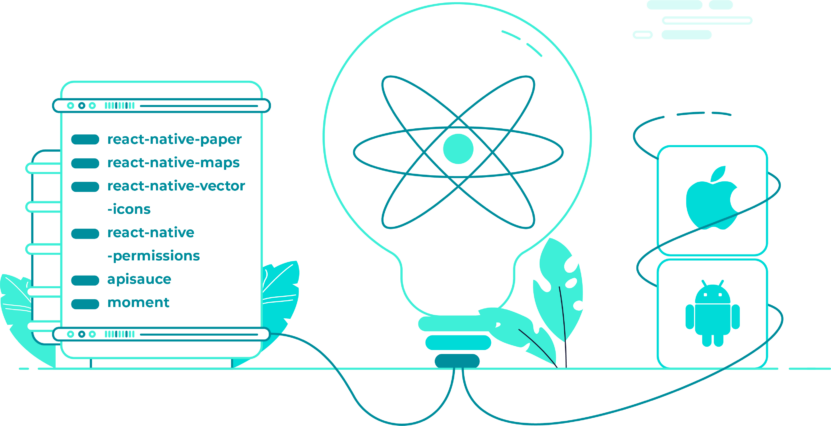Both these platforms are JavaScript-based frameworks. They are open-source and supported by Meta. As you’ll see, they are used for different purposes and are very efficient. But you must understand the difference, as the creation of mobile apps and websites are distinct processes.
Let’s explore how it differs and which issues you must consider when developing it.
To learn more about the creation of an efficient mobile app, and how you can create one and select the right option, check https://www.purrweb.com/services/react-native/ .
React Development Framework

It is a large and constantly modifying JavaScript library available on GitHub for all developers.
Let’s see how websites are built. They utilize three components written in three languages: HTML, a scaffold defining a basic site structure; CSS, which determines the site’s design; and JavaScript, which provides interactivity and connections with the back-end code.
A DOM (Document Object Model) is built from the developed code, which will define what the site will look like. See an example based on the official W3 tutorial below.
React enters the game by enabling element generation in several lines of code, which are reusable. For example, for a button creation, you create each button (and other components) as a JavaScript constant, defining all components, and then you can easily insert them where necessary. Providing various values for the Button element, you can create variations of the same button.
Therefore, React.js is a robust tool for web development. Let’s see how React Native emerged from it, why it is different, and how you can utilize it for your mobile app project.
React Native: A React Extension?

React Native is a JavaScript library, too, similarly available on GitHub, but it is not a React extension, as one may think. Rather, you’d like to use it when creating the mobile app, ensuring it will be cross-platform.
For that reason, it utilizes not only JavaScript but also Java and Objective C, which are used for native development and are present in the library. Although the code will still be written in JavaScript, you must be familiar with these languages. Similarly to React.js, the code is reusable and easy to manage. See the summary of its features in the diagram below.
Therefore, while it uses JavaScript, as React.js does, it is used for different purposes. It uses native Android and iOS APIs to implement various features to the application.
Let’s See the Summary Table of the Two Frameworks
| React.js | React Native |
| Both are JavaScript libraries, have similar architecture, and develop similar DOM for building a website or an app. | |
| Web development. | Mobile app development. |
| A JavaScript library is used to facilitate website generation. | Other languages are present (Java and Objective C) to fulfill its aim of creating a universal mobile app. |
| Uses DOM to render a website. | Uses APIs for building an app. |
Advantages

Both frameworks are free, easy to use, and have extensive documentation and user communities. You can save 30-35% of your money by using the framework for your app creation, develop much quicker due to reusable code, and design an excellent UI/UX.
| React.js advantages | React Native advantages |
| Enables quick and efficient website building | Enables efficient cross-platform app development |
| Both frameworks are community-driven, open-source, and constantly improving. | |
| Both use reusable code components, so your project will be easy to manage. | |
| Both are excellent for providing a cutting-edge user experience. | |
Disadvantages
While React Native usage can be extremely helpful, you need to think about security issues, which are known to emerge due to JavaScript usage. Learn clearly and remember safety practices, such as XSS protection, to avoid them.
| React.js disadvantages | React Native disadvantages |
| As they are constantly developing, new features emerge constantly, and old ones are changing, making frameworks less stable. | |
| It has known security problems, which should be counted during the development. | |
You need to be in touch with their documentation, as it changes regularly due to constantly improving and modifying. Also, it is worth mentioning that both frameworks are connected with Meta, and therefore, it can influence their development.
React.js usage
React.js enables efficient website creation. Instead of bothering with tons of original code, you can efficiently define the primary components of your website. Then, you can use them as a constructor, connecting and programming to interact properly.
React Native: Mobile apps

It enables you to create an app that can be released on both popular platforms without the need to utilize Android Studio and Xcode simultaneously and apply thousands of tests. You can see in the elegant scheme below how React components unite the information flow from both platforms to work with it and then send it to each platform, enabling apps to work properly.
As you see, it proceeds information from both platforms using APIs and native components and sends output to them. So, you can focus on the app’s UI and feature development without bothering about platform peculiarities.
Development Examples
Facebook and Instagram utilize this technology. Meta, as the main supporter of frameworks, uses it extensively. Other examples are Bloomberg and Walmart apps, used for content providing and e-commerce, respectively. On the graph below, you can see that in 2016 – 2017 it become more popular than native development, and now its popularity remains high.
Future Prospects

Both frameworks are actively used, and their auditions are constantly growing. They enable reusing the code and make development quick, easy, and cheap. Their development is so quick that you must always be ready to recheck their documentation, as new features can be added at each moment.
They have different aims, and there is the core of their difference.
- React Native uses Objective C and Java for iOS and Android integration and utilizes their native APIs. You should also consider security issues when using it.
- js is used for efficient website and user interface development.
They are highly relevant today, and you should consider them for your business. Websites and mobile apps are must-haves today, representing your company in the virtual world and attracting new customers worldwide. Both React frameworks are excellent tools to realize each of these products.
Conclusion
React Native is an all-inclusive tool for mobile development and certainly deserves to be used. You can easily define all your app’s options, functions, and elements in JavaScript and then utilize them when necessary. However, be sure to consider security practices to avoid your app being hacked.
While it shares a lot of similarities with React framework and emerged on a similar basis, they solve different tasks. You should use React when you need a website for your business. Both platforms have a vibrant community and are constantly developing and improving.
